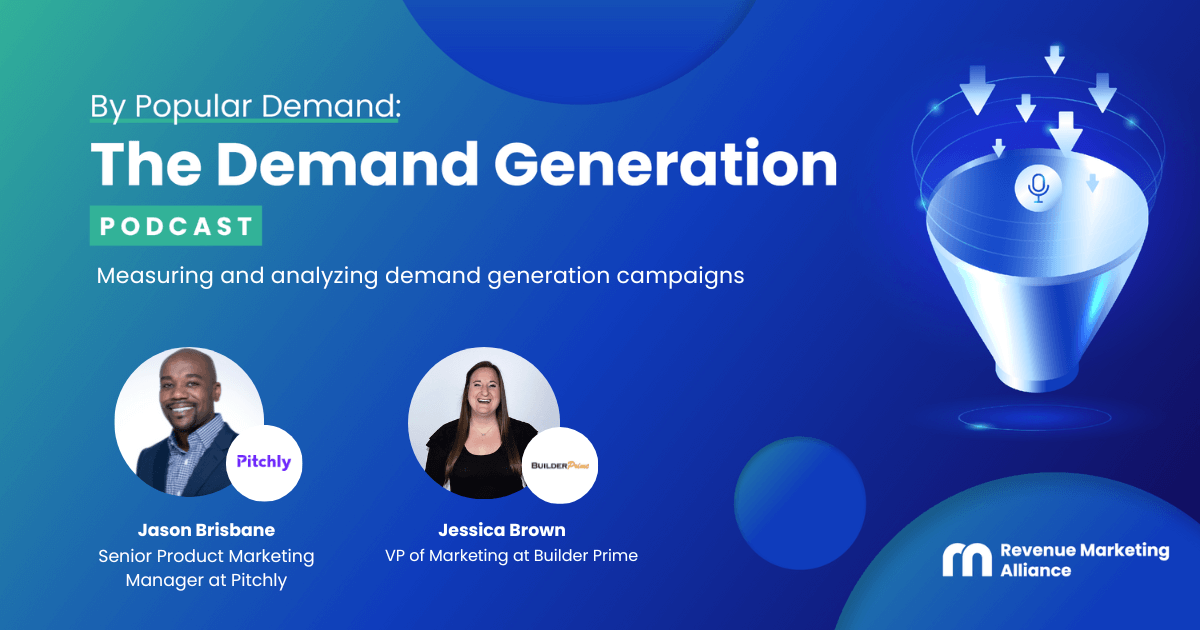The primary goal of any demand generation campaign is to create more pipeline and ultimately close won business.
There’s no single solution; success requires an integrated multi-channel approach tailored to your business. This involves experimentation across both digital and physical channels, supported by cross-functional collaboration within the go-to-market (GTM) function.
For effective channel utilization, I always advocate for providing valuable content that maps to the customer journey – from the top of the funnel to the bottom. This includes sharing content on your website and promoting it through evergreen channels like email and social media.
Consistency is key. By showing up week over week and nurturing your prospects with valuable strategies and insights – whether through infographics, quizzes, blogs at the top of the funnel, or customer product webinars in the middle – you pave the way for sales conversations.
Digital advertising channels, such as Google (both paid search and YouTube), along with LinkedIn, Facebook, Twitter, and Reddit, are important, as are in-person events, though these are traditionally more costly and depend on your business needs and model.
For early-stage companies with limited budgets, these expensive channels may not be practical, especially if the keywords you're trying to bid for are costly.
As you experiment with various channels, consider testing direct mail campaigns to differentiate your outreach. Ultimately, it’s crucial to track the performance of all campaigns using waterfall metrics, focusing more on what works and eliminating what doesn’t.
While there are many other channels I haven’t mentioned, the key is to monitor your CRM (customer relationship management) and marketing automation systems to identify successful tactics and promptly halt any underperforming programs to avoid wasteful spending.

How to develop a demand generation campaign strategy to align with overall marketing goals
To develop a demand generation campaign strategy that aligns with overall marketing goals, I start by establishing a waterfall approach to metrics and mapping marketing programs across the funnel.
It's essential to agree on a unified set of metrics that the GTM team will monitor to assess effectiveness. This requires gaining upfront buy-in and alignment from all related departments like sales, customer success, and product, ensuring that everyone is accountable.
Initially, I evaluate past performance using historical data from our CRM to gauge what has been effective. For companies without extensive historical data, examining industry trends and ideal customer profiles (ICPs) can provide guidance.
In the early stages, we focus on metrics like email clicks, webinar registrants, content downloads, and website visitors. As prospects engage over weeks or months, we track mid-stage metrics including marketing-qualified leads (MQLs), meeting setups, and the number of opportunities created.
Late-stage metrics involve analyzing closed deals, new pipeline wins, and calculating ROI and customer acquisition cost.
Mapping marketing programs across the funnel is also fundamental. It consists of three sections: Account warm-up, key contact engagement, and opportunity acceleration. During the account warm-up phase, the goal is to drive awareness, acquire new contacts, and warm up key accounts using strategies like thought leadership, SEO, and customer stories.
Mid-funnel activities focus on engaging and nurturing contacts with webinars and targeted email campaigns until they are sales-ready. Finally, in the opportunity acceleration phase, we use personalized direct mail, customer dinners, and advisory boards to close deals, particularly in enterprise sales.
Each stage requires a tailored approach to ensure that marketing efforts support the overall goals effectively and align with the customer journey, making the entire process a cohesive effort that drives demand and supports sales.
How to identify effective channels for demand generation
Identifying the most effective channels for demand generation depends significantly on your business and the persona of your target audience. There's no one-size-fits-all solution, and it's crucial to base your channel selection on thorough research tailored to your ideal customer profile.
I recommend collaborating closely with your product marketing team to delve into deep research about your ICP's wants, needs, and the industry verticals you are targeting. If possible, leverage personal networks to gain insights – if you know individuals who fit your ICP, don't hesitate to pick their brains.
Additionally, utilize your current customer base as a resource. Engage with your customer success team to arrange calls with customers or review previously recorded calls through platforms like Chorus or Gong.
Similarly, coordinate with your sales team to participate in prospect calls or listen to pre-recorded sessions. Gathering this intelligence is vital to designing programs that resonate effectively with your target audience.
Ultimately, the selection of demand generation channels should be informed by comprehensive research and direct feedback from both prospects and existing customers to ensure alignment with their preferences and requirements.

How to optimize your demand generation campaigns
Optimizing demand generation campaigns is an ongoing process that requires regular iteration based on data trends observed from your activities. My approach involves a weekly review of the performance, utilizing insights directly from our CRM.
This enables us to understand which marketing activities are leading indicators of success and which might be lagging, such as large events that often have a delayed impact on the funnel due to their nature of influence rather than direct attribution.
I highly recommend maintaining a shared dashboard that reflects full-funnel waterfall metrics, accessible to everyone in the go-to-market function. This could be set up in any CRM platform like HubSpot or Salesforce.
The dashboard should display metrics across the funnel – from marketing-qualified leads to sales-qualified leads (SQLs), through the various opportunity stages up to closed won deals. Regular monitoring, be it weekly, monthly, or quarterly, is essential for staying accountable to performance targets.
If you're meeting or exceeding your goals, there's more leeway for experimentation. However, if you're not meeting your goals or are close to missing them, making swift adjustments based on what's working and pausing or stopping what’s not is key.
Effective optimization often hinges on cross-functional collaboration. Bringing together insights from marketing, sales, customer success, and product teams can help diagnose and fix any leaks in the funnel, whether they relate to the MQL to SQL conversion rate, the SQL to opportunity conversion, or any other stage.
Regular cross-functional meetings, whether in-person or virtual, are invaluable for discussing these insights and making informed decisions to refine the strategy. This collaborative approach ensures that all possible factors – including product innovations, messaging, or competitive pressures – are considered in optimizing the campaign’s performance.
This article is based on Jessica's appearance on The Demand Generation podcast.



 Follow us on LinkedIn
Follow us on LinkedIn



